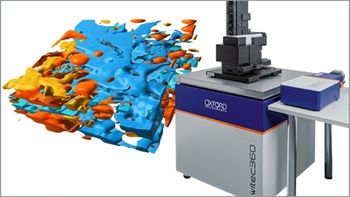Key Points
- Raman spectroscopy and XRD confirmed Ribbeck's mineralogy, including pure enstatite, albite, and forsterite phases.
- Spectroscopic analysis highlights Ribbeck as a pristine aubrite with minimal Earth-based alteration.
- Rare metallic and sulfide inclusions, revealed via EDS, formed under highly reduced, oxygen-depleted conditions.
- Spectroscopy supports Ribbeck’s magmatic and metamorphic history, refining insights into aubrite evolution and Solar System formation.
A Meteorite with a Message from the Cosmos
On January 21, 2024, a rare event unfolded above Ribbeck, Germany, as asteroid 2024 BX1 (SAR 2736) entered Earth's atmosphere in a dazzling display that ended in the quiet fields west of Berlin. Named the Ribbeck meteorite, this scientifically precious object was observed just hours before impact—only the eighth such instance in history. A collaborative study led by researchers from the NanoBioMedical Centre and Institute of Geology at Adam Mickiewicz University in Poznań, Poland, has now revealed its hidden geologic and magnetic story (1).
The research, published in Scientific Reports, was conducted by Mieszko Kołodziej, Danuta Michalska, Karol Załęski, Igor Iatsunskyi, Andrzej Muszyński, and Emerson Coy. Their study provides a rich analysis of the Ribbeck meteorite’s mineral content and internal structure, offering a rare, unweathered glimpse into the Solar System’s formative years (1).
Spectroscopy Unlocks Ancient Origins
At the core of the investigation was Raman spectroscopy, which identified the primary mineral components—enstatite, albite, and forsterite. The Raman spectra showed the presence of pure enstatite (Pbca symmetry group), with sharp, well-defined peaks at 342, 663, 684, 1012, and 1032 cm⁻¹, confirming the absence of Fe-bearing clinoenstatite. This clarity in the spectra strongly supports its classification as a coarse-grained aubrite (1).
Forsterite crystals also exhibited distinctive vibrational modes at 824, 856, 881, 918, and 963 cm⁻¹, with a lack of iron impurities, indicating high purity. Meanwhile, the feldspar component (albite) displayed characteristic peaks typical of Na-rich plagioclase, including features at 155, 168, and 222 cm⁻¹—some of which suggested prior metamorphic annealing, a process linked to ancient impact events (1).
This non-destructive spectroscopic analysis was paired with X-ray diffraction (XRD), further validating the mineral phases and their crystalline structures (1).
Tracing Its Cosmic Past
The Ribbeck meteorite contains rare minerals formed under highly reducing conditions, with oxygen fugacity values between −5 and −7 log(fO₂), akin to environments found on Mercury or asteroid 3103 Eger. These include oldhamite (CaS), brezinanite (Cr₃S₄), wassonite/heideite (FeTi₂S₄), and alabandite ((Mn,Fe)S) (1).
Energy-dispersive X-ray spectroscopy (EDS) also revealed metallic nodules of FeNi alloy enriched with calcium and silicon, and Fe-Cr structures suggesting atmospheric melting effects during entry. Notably, no iron was found in enstatite, a key feature of aubrites that points to extremely low-oxygen formation environments (1).
The magnetism of the Ribbeck fragments, studied via superconducting quantum interference device (SQUID) magnetometry, identified weak magnetic responses originating from these sulphide and metallic accessory phases, not from the dominant silicate matrix (1).
A number of spectroscopic technologies have been used to discover the geological and chemical foundations of extraterrestrial and terrestrial materials (1–4).
A Unique Strewn Field and Scientific Opportunity
Over 200 fragments totaling more than 1.7 kg were recovered from the Ribbeck strewn field, thanks to predictive models from teams in the Czech Republic, Canada, and the U.S. Their trajectory analysis revealed a west-to-east inversion in fragment sizes—smaller meteorites to the east and larger to the west—despite an entry angle from the east-northeast. This rare strewn field geometry was due to high-altitude winds shifting the descent angle by approximately 139°.
Such fresh, minimally weathered material offers a rare look into unaltered meteoritic matter, making Ribbeck a scientific gem (1).
Deep Time and Aubrite Mysteries
Aubrites are among the most reduced and ancient igneous meteorites. Their exposure to cosmic rays for tens to hundreds of millions of years suggests they originated from a long-lived parent body, likely a now-destroyed E-type asteroid like 3103 Eger. While their spectral profile aligns loosely with known Xe-type asteroids, slight mismatches suggest space weathering or dust cover effects—recently observed with asteroid Ryugu as well (1).
This study adds Ribbeck to the limited catalog of known aubrites and strengthens the link between enstatite achondrites and ancient Solar System dynamics (1).
References
(1) Kołodziej, M.; Michalska, D.; Załęski, K.; et al. A Closer Look into the Structure and Magnetism of the Recently Fallen Meteorite Ribbeck. Sci. Rep. 2025, 15, 6866. DOI: 10.1038/s41598-025-90383-8
(2) Dausend, L. D.; Martin, A. C.; Emery, J. P. Measuring the Effects of Regolith Porosity on Mid-IR Spectra of the Allende Meteorite. Planet. Sci. J. 2025, 6 (3), 54. DOI: 10.3847/PSJ/ada778
(3) Otarbaev, A.; Alieva, G.; Tajimova, R. Research of Meteorites Using Modern Technologies. Innov. Res. Mod. World: Theory Pract. 2025, 4 (14), 136–139. https://inlibrary.uz/index.php/zdit/article/view/88163 (accessed May 22, 2025).
(4) Workman, J., Jr. Introduction to Satellite and Aerial Spectral Imaging Systems. Spectroscopy Online, April 28, 2025. https://www.spectroscopyonline.com/view/introduction-to-satellite-and-aerial-spectral-imaging-systems (accessed May 22, 2025).






